Since the beginning of the October 7 war, there has been a noticeable surge in citizenship requests and Aliyah to Israel, particularly from France and the United States, but not exclusively. Responding to this growing trend, Tel Aviv University (TAU) is introducing new academic integration tracks in collaboration with Israel’s Ministry of Aliyah and Integration. These tracks offer a unique opportunity for new Olim to start studying in English or French and eventually graduate in Hebrew.
Professor Milette Shamir, Vice President International of TAU: “Discovering the overwhelming interest in moving to Israel, during my recent travels abroad, has left me truly astonished. It’s heartening to see how many young people are eager to make aliya at this challenging moment in Israel’s history. The new Integration Tracks could not have come at a better time.”
In the upcoming year, TAU will introduce two English tracks and one in French offered through the Lowy International School. Students opting for English can choose between a
BA in Liberal Arts and Management and an
MA in Teaching English to Speakers of Other Languages.
For French speakers, there’s the option to apply to the
Programme de Licence en Sciences Sociales, Politiques et Économiques with a choice of five fields of study that include Economics, Political Science, Communication, Anthropology & Sociology, and Labor Studies. Currently, it is the only French-taught program in Social Sciences in Israel.
Hebrew Classes, Networking Opportunities, And More
These programs provide newly arrived immigrants with a valuable opportunity for soft integration into Israeli society and the educational system. The academic integration track includes fully-funded Hebrew learning, with intensive language courses during semester breaks and additional Hebrew classes throughout the semesters. Before transferring to the Hebrew track, students take the Yael exam to assess their Hebrew proficiency.
Students in the English undergraduate track have an option of studying Hebrew for two years, while those in the French track will have a shorter, yet more intensive year-long Hebrew course as their academic workload will be lighter – with only five subject courses in their first year of studies.
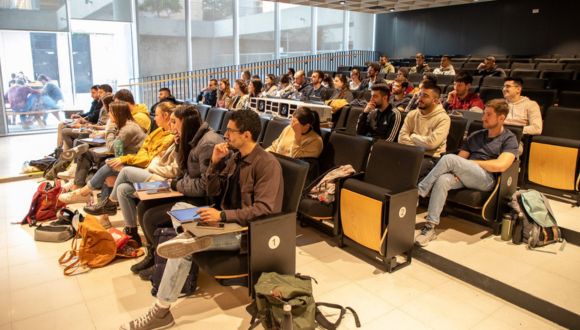
Additionally, students have the opportunity to work part-time, acquiring valuable local work experience. Daria Gurskaia, a second-year student in the BA in Liberal Arts and Management who made Aliyah in 2023, highlights, “In my current job, I get to apply the knowledge and skills we’ve learned in the classroom. Our program effectively prepares us for the job market, and working part-time during my studies will surely help me build my career.”
“Students will be able to immerse themselves in the local community while studying alongside Israelis, making them more eligible for jobs in Israel upon graduation.”—Louise Hyatt, the program coordinator for BA in Liberal Arts and Management.
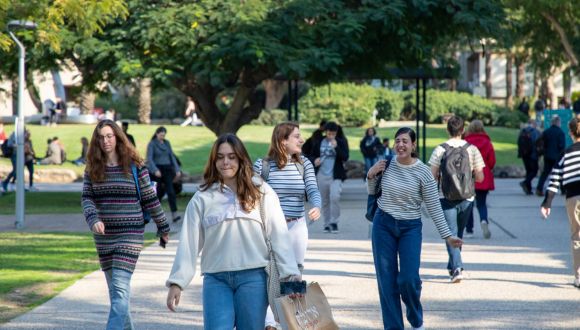
MA in TESOL graduates will receive an Israeli teaching certificate upon completing the full two-year program, enabling them to find employment in schools or colleges in Israel. In addition to a strong theoretical foundation, the curriculum includes practical training.
“Our students teach English classes either in local schools or through the TAU’s Center for Language Excellence,”—Kate Klementieva, TESOL program coordinator.
MA TESOL students find immense value in this practical component of the program. For Elli Kichik, a TESOL student participant, the practicum is a standout feature: “I can watch a real experienced teacher at work, and also teach myself.” She is confident that the TESOL degree will unlock numerous opportunities for her in the future: “I’m already applying the skills acquired during the course in my current teaching practice.”
Beyond Academics: Comprehensive Assistance System
Making Aliyah is a significant decision, and TAU, in collaboration with the Israel Student Authority, offers extensive support. Admitted students will receive support from a designated Olim student counselor on campus throughout their studies, addressing academic, scholarship, and other concerns.
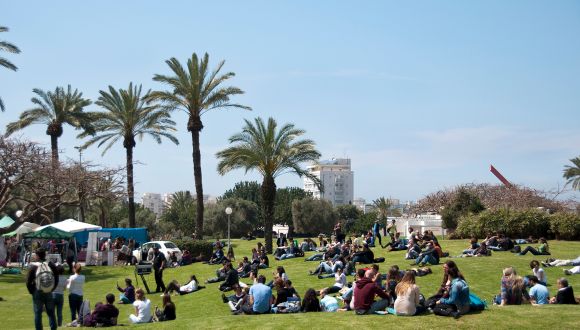
Additionally, Olim students have access to psychological guidance, provided either by a social worker or through a psychological support framework subsidized by the Israel Student Authority.
The tracks also come with partial or full funding for eligible students, and housing support grants are available to new Olim.
Student Spotlight
Noa Joffe, originally from Germany, made Aliyah in 2021 to connect with her Israeli and Jewish roots. Reflecting on her decision, she shares, “Life in Israel is hard, but the experience is worth it. The multiculturalism and diversity here have taught me many things about life and helped me develop myself.”
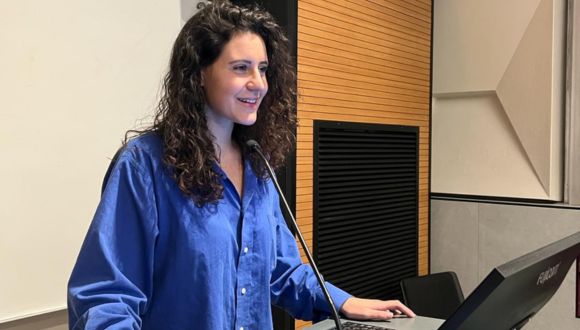 Noa Joffe, Olah from Germany
Noa Joffe, Olah from Germany
“One can learn about Israel by coming here for a vacation, but one will really benefit from it only if one takes the jump to the unknown and engages with the challenge of studying in a new country. For me, it was the best decision I could have taken.”
Joffe emphasizes that studying at Tel Aviv University reinforced her decision: “It is a big challenge, but the reward of making it is the greatest feeling.”
How to Enroll?
The tracks are open to new Olim who made Aliyah less than 3 years ago. The maximum age for undergraduate applicants is 27 years old, while for the graduate program, the cutoff is at 35 years old.
What is particularly important, undergraduate applicants are exempt from submitting psychometric test results, a requirement for Israeli applicants.
To check your eligibility, you can contact the
English or
French-speaking coordinator at the Israel Student Authority.
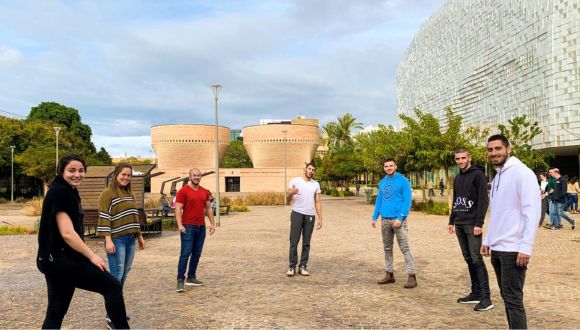
Explore new academic horizons, embrace cultural diversity, and contribute to Israel’s future by joining TAU’s integration tracks. To discover more about opportunities for Olim at Tel Aviv University, please visit the
dedicated webpage.
 Chaviva Sirote-Katz
Despite the theoretical interest, there is a limitation in measuring these phenomena in quantum systems. Due to the nature of quantum mechanics, one cannot directly measure the electron’s wave function and its dynamical evolution. Instead, researchers indirectly measure the wave-like and topological properties of electrons in materials, for instance by measuring the electrical conductivity at the edges of solids.
In the current study, the researchers considered the possibility of constructing a sufficiently large mechanical system that would adhere to dynamical rules akin to those found in quantum systems, and in which they could directly measure everything. To this end, they built an array of 50 pendula, with string lengths that slightly varied from one pendulum to the other. The strings of each neighboring pair of pendula were connected at a controlled height, such that each one’s motion would affect its neighbors’ motion.
Quantum Pendulum Insights
On one hand, the system obeyed Newton’s laws of motion, which govern the physics of our everyday lives, but the precise lengths of the pendula and the connections between them created a magical phenomenon: Newton’s laws caused the wave of the pendulum’s motion to approximately obey Schrödinger’s equation – the fundamental equation of quantum mechanics, which governs the motion of electrons in atoms and in solids. Therefore, the motion of the pendula, which is visible in the macroscopic world, reproduced the behaviors of electrons in periodic systems such as crystals.
The researchers pushed a few pendula and then released them. This generated a wave that propagated freely along the chain of pendula, and the researchers could directly measure the evolution of this wave – an impossible mission for the motion of electrons. This enabled the direct measurement of three phenomena. The first phenomenon, known as Bloch oscillations, occurs when electrons within a crystal are influenced by an electric voltage, pulling them in a specific direction. In contrast to what one would expect, the electrons do not simply move along the direction of the field, but they oscillate back and forth due to the periodic structure of the crystal. This phenomenon is predicted to appear in ultra-clean solids, which are very hard to find in nature. In the pendula system, the wave periodically moved back and forth, exactly according to Bloch’s prediction.
The second phenomenon that was directly measured in the pendula system is called Zener tunneling. Tunneling is a unique quantum phenomenon, which allows particles to pass through barriers, in contrast to classical intuition. For Zener tunneling, this appears as the splitting of a wave, the two parts of which then move in opposite directions. One part of the wave returns as in Bloch oscillations, while the other part “tunnels” through a forbidden state and proceeds in its propagation. This splitting, and specifically its connection to the motion of the wave in either direction, is a clear characteristic of the Schrödinger equation.
In fact, such a phenomenon is what disturbed Schrödinger, and is the main reason for the suggestion of his famous paradox; according to Schrödinger’s equation, the wave of an entire cat can split between a live-cat state and a dead-cat state. The researchers analyzed the pendula motion and extracted the parameters of the dynamics, for instance, the ratio between the amplitudes of the two parts of the split wave, which is equivalent to the quantum Zener tunneling probability. The experimental results showed fantastic agreement with the predictions of Schrödinger’s equation.
The pendula system is governed by classical physics. Therefore, it cannot mimic the full richness of quantum systems. For instance, in quantum systems, the measurement can influence the system’s behavior (and cause Schrödinger’s cat to eventually be dead or alive when it is viewed). In the classical system of macroscopic pendulum, there is no counterpart to this phenomenon. However, even with these limitations, the pendula array allows the observation of interesting and non-trivial properties of quantum systems, which may not be directly measured in the latter.
Chaviva Sirote-Katz
Despite the theoretical interest, there is a limitation in measuring these phenomena in quantum systems. Due to the nature of quantum mechanics, one cannot directly measure the electron’s wave function and its dynamical evolution. Instead, researchers indirectly measure the wave-like and topological properties of electrons in materials, for instance by measuring the electrical conductivity at the edges of solids.
In the current study, the researchers considered the possibility of constructing a sufficiently large mechanical system that would adhere to dynamical rules akin to those found in quantum systems, and in which they could directly measure everything. To this end, they built an array of 50 pendula, with string lengths that slightly varied from one pendulum to the other. The strings of each neighboring pair of pendula were connected at a controlled height, such that each one’s motion would affect its neighbors’ motion.
Quantum Pendulum Insights
On one hand, the system obeyed Newton’s laws of motion, which govern the physics of our everyday lives, but the precise lengths of the pendula and the connections between them created a magical phenomenon: Newton’s laws caused the wave of the pendulum’s motion to approximately obey Schrödinger’s equation – the fundamental equation of quantum mechanics, which governs the motion of electrons in atoms and in solids. Therefore, the motion of the pendula, which is visible in the macroscopic world, reproduced the behaviors of electrons in periodic systems such as crystals.
The researchers pushed a few pendula and then released them. This generated a wave that propagated freely along the chain of pendula, and the researchers could directly measure the evolution of this wave – an impossible mission for the motion of electrons. This enabled the direct measurement of three phenomena. The first phenomenon, known as Bloch oscillations, occurs when electrons within a crystal are influenced by an electric voltage, pulling them in a specific direction. In contrast to what one would expect, the electrons do not simply move along the direction of the field, but they oscillate back and forth due to the periodic structure of the crystal. This phenomenon is predicted to appear in ultra-clean solids, which are very hard to find in nature. In the pendula system, the wave periodically moved back and forth, exactly according to Bloch’s prediction.
The second phenomenon that was directly measured in the pendula system is called Zener tunneling. Tunneling is a unique quantum phenomenon, which allows particles to pass through barriers, in contrast to classical intuition. For Zener tunneling, this appears as the splitting of a wave, the two parts of which then move in opposite directions. One part of the wave returns as in Bloch oscillations, while the other part “tunnels” through a forbidden state and proceeds in its propagation. This splitting, and specifically its connection to the motion of the wave in either direction, is a clear characteristic of the Schrödinger equation.
In fact, such a phenomenon is what disturbed Schrödinger, and is the main reason for the suggestion of his famous paradox; according to Schrödinger’s equation, the wave of an entire cat can split between a live-cat state and a dead-cat state. The researchers analyzed the pendula motion and extracted the parameters of the dynamics, for instance, the ratio between the amplitudes of the two parts of the split wave, which is equivalent to the quantum Zener tunneling probability. The experimental results showed fantastic agreement with the predictions of Schrödinger’s equation.
The pendula system is governed by classical physics. Therefore, it cannot mimic the full richness of quantum systems. For instance, in quantum systems, the measurement can influence the system’s behavior (and cause Schrödinger’s cat to eventually be dead or alive when it is viewed). In the classical system of macroscopic pendulum, there is no counterpart to this phenomenon. However, even with these limitations, the pendula array allows the observation of interesting and non-trivial properties of quantum systems, which may not be directly measured in the latter.
 The third phenomenon that was directly observed in the pendula experiment was the wave evolution in a topological medium. Here, the researchers found a way to directly measure the topological characteristic from the wave dynamics in the system – a task that is almost impossible in quantum materials. To this end, the pendula array was tuned twice, so that they would mimic Schrödinger’s equation of the electrons, once in a topological state and once in a trivial (i.e. standard) state. By comparing small differences in the pendulum motion between the two experiments, the researchers could classify the two states. The classification required a very delicate measurement of a difference between the two experiments of exactly half a period of oscillation of a single pendulum after 400 full oscillations that lasted 12 minutes. This small difference was found to be consistent with the theoretical prediction.
The experiment opens the door to realizing further situations that are even more interesting and complex, like the effects of noise and impurities, or how energy leakage affects wave dynamics in Schrödinger’s equation. These are effects that can be easily realized and seen in this system, by deliberately perturbing the pendula motion in a controlled manner.
The third phenomenon that was directly observed in the pendula experiment was the wave evolution in a topological medium. Here, the researchers found a way to directly measure the topological characteristic from the wave dynamics in the system – a task that is almost impossible in quantum materials. To this end, the pendula array was tuned twice, so that they would mimic Schrödinger’s equation of the electrons, once in a topological state and once in a trivial (i.e. standard) state. By comparing small differences in the pendulum motion between the two experiments, the researchers could classify the two states. The classification required a very delicate measurement of a difference between the two experiments of exactly half a period of oscillation of a single pendulum after 400 full oscillations that lasted 12 minutes. This small difference was found to be consistent with the theoretical prediction.
The experiment opens the door to realizing further situations that are even more interesting and complex, like the effects of noise and impurities, or how energy leakage affects wave dynamics in Schrödinger’s equation. These are effects that can be easily realized and seen in this system, by deliberately perturbing the pendula motion in a controlled manner.




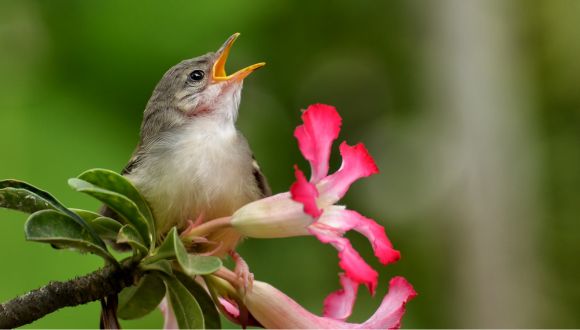 A prinia bird leaninn on a branch.
The research was conducted under the leadership of research student Congnan Sun, Dr. Arjan Boonman and Prof. Yossi Yovel, head of
A prinia bird leaninn on a branch.
The research was conducted under the leadership of research student Congnan Sun, Dr. Arjan Boonman and Prof. Yossi Yovel, head of 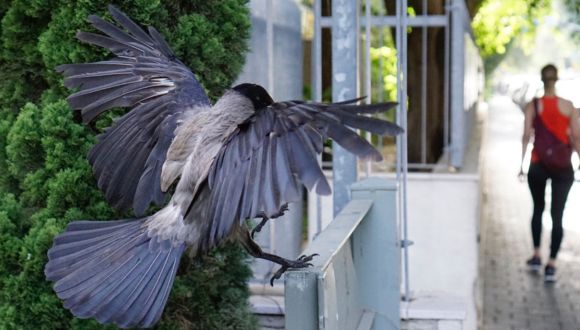 In total, the researchers recorded 3,234 hours containing around 250,000 bird calls, using artificial intelligence to identify the calls and the birds that made them. During the lockdown, human activity in the residential areas increased by 49% and human activity in the Yarkon Park – while leaving homes to go to parks was still prohibited – decreased by 31%.
“First, we found that the overall activity of the birds, regardless of COVID-19, is 53% higher in the parks than in the streets adjacent to them”, explains Prof. Yuval. “The parks are a center of activity for birds, and that is always true. On the other hand, a complex picture emerges from the lockdown period. The crows and ringneck parakeets, which usually subsist on leftover food from people in the park, searched for other avenues. The calls from the crows in the park decreased by about 50%, and the chirping of the ringneck parakeets in the park dropped by around 90%. Conversely, the shy graceful prinia, an outstanding adaptor, increased its activity by about 12%. These findings highlight the fact that there are animals that depend on us in the city, as well as the flexibility of these animals and the complexity and diversity of the urban ecosystem”.
In total, the researchers recorded 3,234 hours containing around 250,000 bird calls, using artificial intelligence to identify the calls and the birds that made them. During the lockdown, human activity in the residential areas increased by 49% and human activity in the Yarkon Park – while leaving homes to go to parks was still prohibited – decreased by 31%.
“First, we found that the overall activity of the birds, regardless of COVID-19, is 53% higher in the parks than in the streets adjacent to them”, explains Prof. Yuval. “The parks are a center of activity for birds, and that is always true. On the other hand, a complex picture emerges from the lockdown period. The crows and ringneck parakeets, which usually subsist on leftover food from people in the park, searched for other avenues. The calls from the crows in the park decreased by about 50%, and the chirping of the ringneck parakeets in the park dropped by around 90%. Conversely, the shy graceful prinia, an outstanding adaptor, increased its activity by about 12%. These findings highlight the fact that there are animals that depend on us in the city, as well as the flexibility of these animals and the complexity and diversity of the urban ecosystem”.

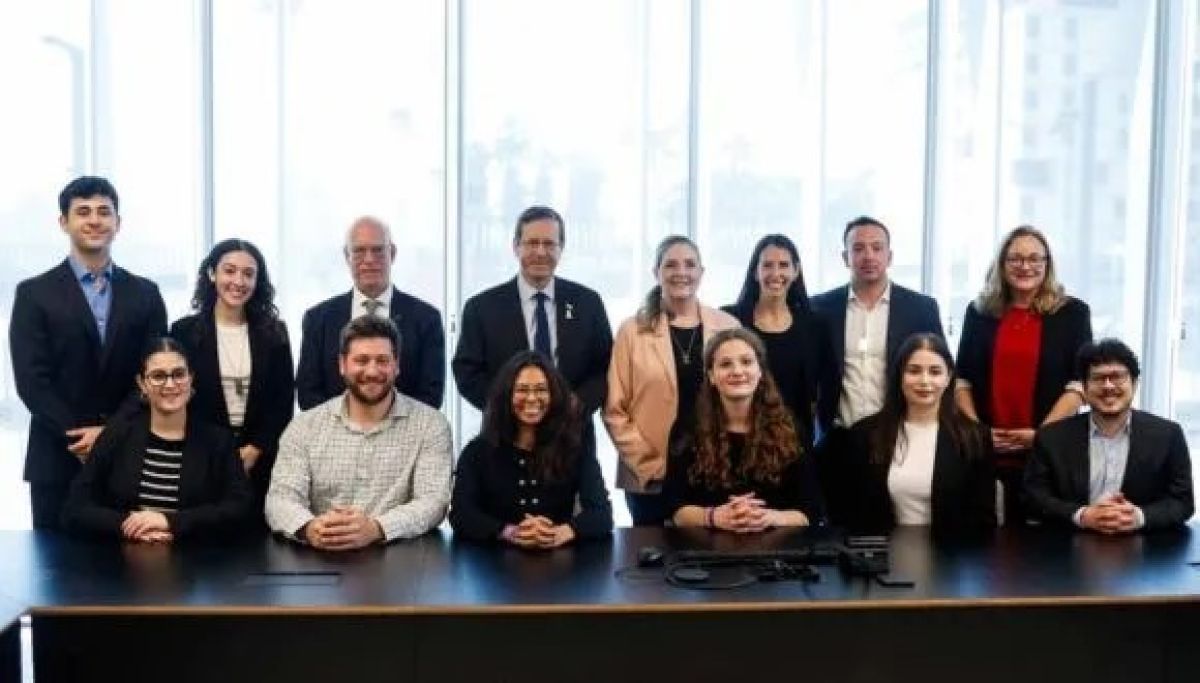
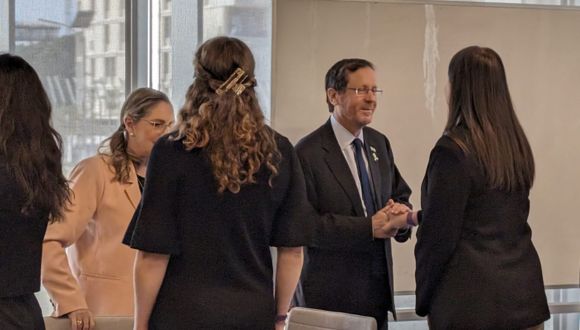 President Herzog and The First Lady, Michal Herzog, Shaking hands with TAU students.
The Herzogs then met with TAU Lowy International School students, many of whom are part of the student task force battling anti-Israel disinformation on social media.
Additionally, the President and his wife toured the lab of Dr. Tali Ilovitsh, who develops innovative ultrasound technology that destroys cancer cells without surgical intervention, and the lab of Prof. Ben Maoz, who develops “organ-on-a-chip” technologies for regenerative medicine and drug testing. Both labs are in TAU’s Samueli Engineering Building at
President Herzog and The First Lady, Michal Herzog, Shaking hands with TAU students.
The Herzogs then met with TAU Lowy International School students, many of whom are part of the student task force battling anti-Israel disinformation on social media.
Additionally, the President and his wife toured the lab of Dr. Tali Ilovitsh, who develops innovative ultrasound technology that destroys cancer cells without surgical intervention, and the lab of Prof. Ben Maoz, who develops “organ-on-a-chip” technologies for regenerative medicine and drug testing. Both labs are in TAU’s Samueli Engineering Building at 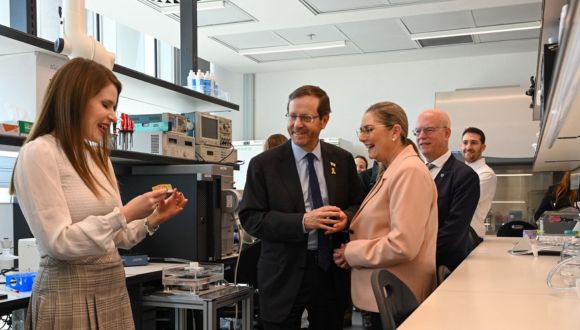 The President and the First Lady visiting Dr. Ilovitsh’s lab.
President Isaac Herzog and Michal Herzog’s visit to Tel Aviv University showcased the profound support for students at TAU, bridging the gap between military service and academic pursuits. Their interaction underscored TAU’s commitment to empowering students to overcome their challenges and thrive. Together, they symbolized the enduring partnership between education and national service, inspiring a brighter future for all.
The President and the First Lady visiting Dr. Ilovitsh’s lab.
President Isaac Herzog and Michal Herzog’s visit to Tel Aviv University showcased the profound support for students at TAU, bridging the gap between military service and academic pursuits. Their interaction underscored TAU’s commitment to empowering students to overcome their challenges and thrive. Together, they symbolized the enduring partnership between education and national service, inspiring a brighter future for all.

 “It’s hard to believe that in a little while, five months will have passed since October 7th, a day that will forever be remembered as a terrible disaster for the State of Israel and the Jewish people”, Prof. Porat continued. “The terrible thing that happened that we feel both as a nation, as a country and individually is a pain that does not pass with time, it only grows during this period. If there is a need for a painful reminder, we receive it every day. We all hope for the return of the captives and the recovery of the wounded, and the cessation of soldiers dying in battle. This grove is dedicated to the murdered and fallen, but it also contains a certain sign of hope for the return of the captives”.
“It’s hard to believe that in a little while, five months will have passed since October 7th, a day that will forever be remembered as a terrible disaster for the State of Israel and the Jewish people”, Prof. Porat continued. “The terrible thing that happened that we feel both as a nation, as a country and individually is a pain that does not pass with time, it only grows during this period. If there is a need for a painful reminder, we receive it every day. We all hope for the return of the captives and the recovery of the wounded, and the cessation of soldiers dying in battle. This grove is dedicated to the murdered and fallen, but it also contains a certain sign of hope for the return of the captives”.
 As Prof. Porat planted the first tree in the avenue, a solemn atmosphere took hold, carrying with it a firm commitment to never forget the sacrifices made.
Miriam Haber shared her son’s, Zechariah Pesach’s, pursuits. Zechariah Pesach (RIP) had fallen in battle in Gaza on January 16th. Zechariah fell at the age of 32 and was a very dedicated husband and father to three young children. “The main thing about his fall is a heavy personal loss to his family and friends, but not only that. Zechariah’s choice in the field of plant health and his research topic – Wheat Cultivation Under Stress Conditions, stemmed from his deep love for the land of Israel, the ground of Israel, and all humanity. He chose to help with food security due to the difficult climate changes affecting the earth. We are convinced that his colleagues at TAU will continue to fulfill his scientific dreams”, said Miriam, moving the audience present at the ceremony, with the planting of a tree in memory of her son.
As Prof. Porat planted the first tree in the avenue, a solemn atmosphere took hold, carrying with it a firm commitment to never forget the sacrifices made.
Miriam Haber shared her son’s, Zechariah Pesach’s, pursuits. Zechariah Pesach (RIP) had fallen in battle in Gaza on January 16th. Zechariah fell at the age of 32 and was a very dedicated husband and father to three young children. “The main thing about his fall is a heavy personal loss to his family and friends, but not only that. Zechariah’s choice in the field of plant health and his research topic – Wheat Cultivation Under Stress Conditions, stemmed from his deep love for the land of Israel, the ground of Israel, and all humanity. He chose to help with food security due to the difficult climate changes affecting the earth. We are convinced that his colleagues at TAU will continue to fulfill his scientific dreams”, said Miriam, moving the audience present at the ceremony, with the planting of a tree in memory of her son.
 Miriam Haber speaking to campus members.
Miriam Haber speaking to campus members.
 Our hearts are always with the families of the fallen and the captives, and we all hope that they will all soon return to us in peace.
Our hearts are always with the families of the fallen and the captives, and we all hope that they will all soon return to us in peace.
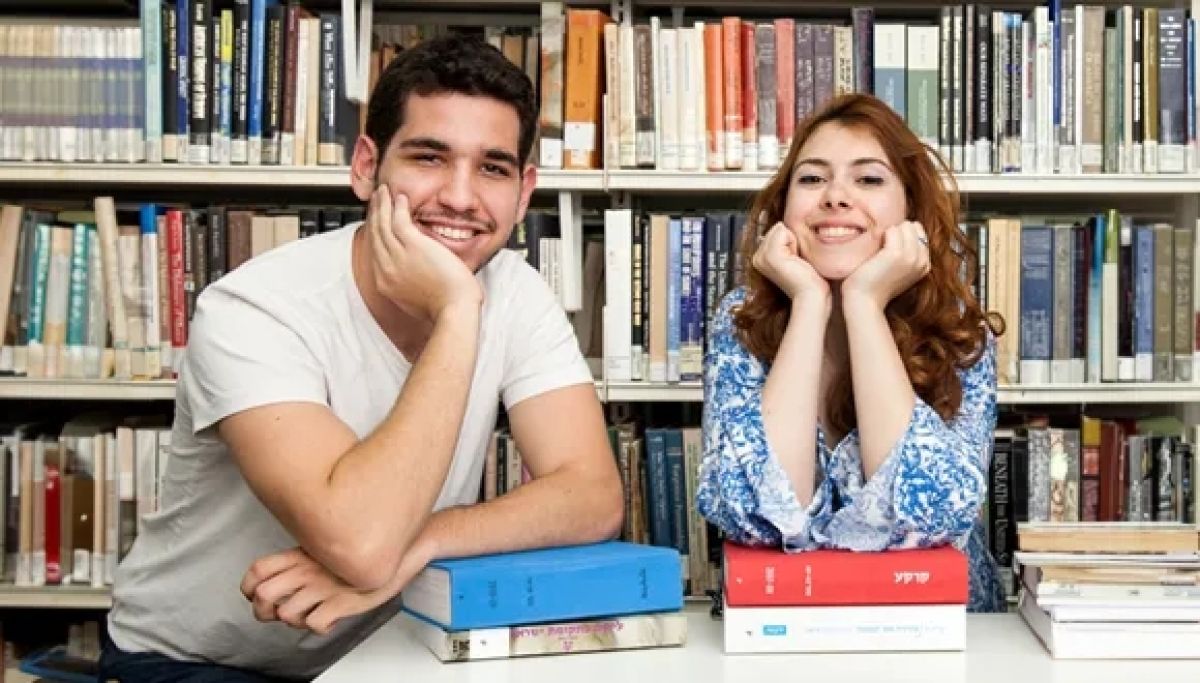
 Additionally, students have the opportunity to work part-time, acquiring valuable local work experience. Daria Gurskaia, a second-year student in the BA in Liberal Arts and Management who made Aliyah in 2023, highlights, “In my current job, I get to apply the knowledge and skills we’ve learned in the classroom. Our program effectively prepares us for the job market, and working part-time during my studies will surely help me build my career.”
Additionally, students have the opportunity to work part-time, acquiring valuable local work experience. Daria Gurskaia, a second-year student in the BA in Liberal Arts and Management who made Aliyah in 2023, highlights, “In my current job, I get to apply the knowledge and skills we’ve learned in the classroom. Our program effectively prepares us for the job market, and working part-time during my studies will surely help me build my career.”
 MA in TESOL graduates will receive an Israeli teaching certificate upon completing the full two-year program, enabling them to find employment in schools or colleges in Israel. In addition to a strong theoretical foundation, the curriculum includes practical training.
MA in TESOL graduates will receive an Israeli teaching certificate upon completing the full two-year program, enabling them to find employment in schools or colleges in Israel. In addition to a strong theoretical foundation, the curriculum includes practical training.
 Additionally, Olim students have access to psychological guidance, provided either by a social worker or through a psychological support framework subsidized by the Israel Student Authority.
The tracks also come with partial or full funding for eligible students, and housing support grants are available to new Olim.
Additionally, Olim students have access to psychological guidance, provided either by a social worker or through a psychological support framework subsidized by the Israel Student Authority.
The tracks also come with partial or full funding for eligible students, and housing support grants are available to new Olim.
 Noa Joffe, Olah from Germany
Noa Joffe, Olah from Germany
 Explore new academic horizons, embrace cultural diversity, and contribute to Israel’s future by joining TAU’s integration tracks. To discover more about opportunities for Olim at Tel Aviv University, please visit the
Explore new academic horizons, embrace cultural diversity, and contribute to Israel’s future by joining TAU’s integration tracks. To discover more about opportunities for Olim at Tel Aviv University, please visit the 

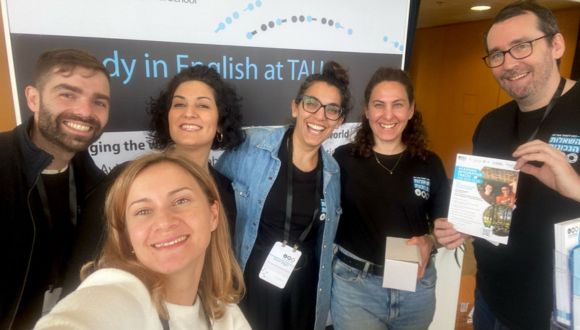



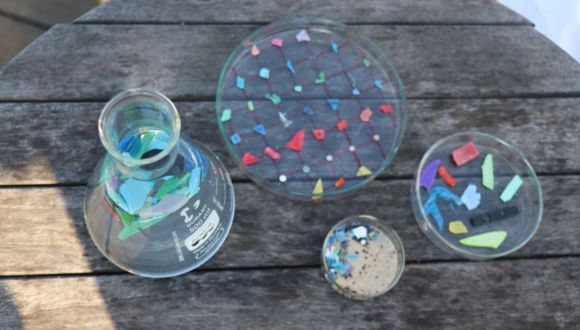 “These programs are a golden opportunity for Engineering or exact science majors keen on studying Biomedical or Environmental Engineering in the start-up nation,” comments Brian Rosen, Vice Dean for International Affairs in the
“These programs are a golden opportunity for Engineering or exact science majors keen on studying Biomedical or Environmental Engineering in the start-up nation,” comments Brian Rosen, Vice Dean for International Affairs in the 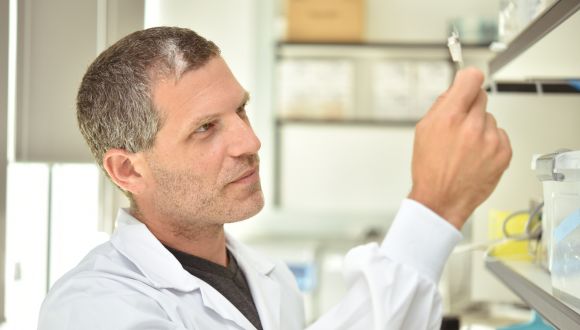 Professor Ben Maoz, Department of Bio-Medical Engineering, the head of the Biomedical Engineering MSc program
Within this program, students can explore nine primary
Professor Ben Maoz, Department of Bio-Medical Engineering, the head of the Biomedical Engineering MSc program
Within this program, students can explore nine primary 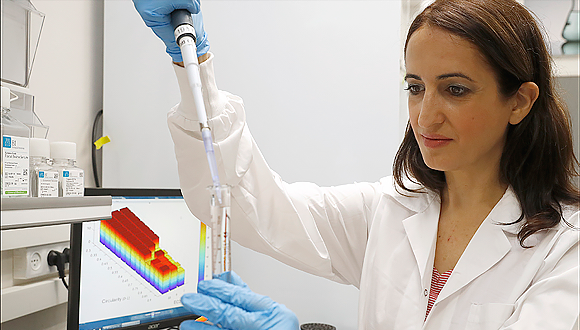 Professor Hadas Mamane, School of Mechanical Engineering, head of MSc in Environmental Engineering
Professor Hadas Mamane, the program head, assigns great importance to hands-on experience from day one:
Professor Hadas Mamane, School of Mechanical Engineering, head of MSc in Environmental Engineering
Professor Hadas Mamane, the program head, assigns great importance to hands-on experience from day one:
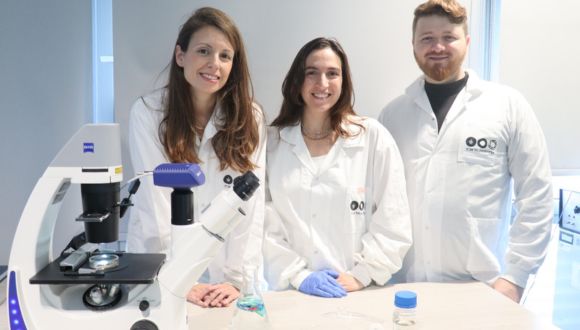 Dr Ines Zucker and her students
Whether immersing yourself in the intricacies of biomedical engineering or contributing to environmental solutions, these two new graduate programs at TAU promise a unique blend of academic rigor, practical application, and a pathway to diverse and impactful career opportunities. Embark on an educational journey that not only expands your knowledge but also positions you at the forefront of innovation in your chosen field.
International admissions are now open, and you can submit your application
Dr Ines Zucker and her students
Whether immersing yourself in the intricacies of biomedical engineering or contributing to environmental solutions, these two new graduate programs at TAU promise a unique blend of academic rigor, practical application, and a pathway to diverse and impactful career opportunities. Embark on an educational journey that not only expands your knowledge but also positions you at the forefront of innovation in your chosen field.
International admissions are now open, and you can submit your application 
